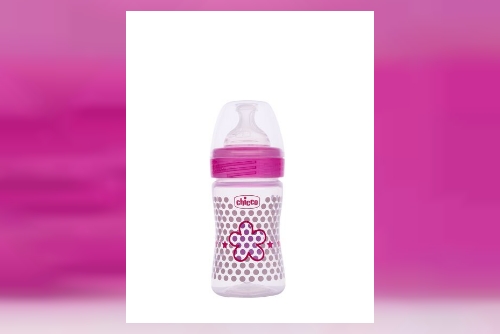When it comes to feeding your baby, selecting the right feeding bottle is crucial for both their comfort and their feeding success. One of the key factors to consider when choosing a feeding bottle is the flow rate of the nipple. The flow rate refers to how quickly milk or formula flows through the nipple and into your baby's mouth. Understanding flow rates can help ensure a more comfortable feeding experience for your baby and reduce issues like choking, fussiness, or gas. In this article, we’ll explore the different feeding bottle flow rates, how they affect feeding, and tips for choosing the right one for your baby.
1. What Are Flow Rates?Flow rates are typically categorized as slow, medium, and fast, and they determine how much milk or formula can pass through the nipple with each suck. Here's a breakdown of the common flow rates:
Slow Flow Rate: These nipples are designed for newborns or young infants who are still developing their sucking skills. They allow for a slow and controlled flow of milk, helping to prevent choking and overfeeding.
Medium Flow Rate: Suitable for infants who are a bit older and have more developed sucking abilities, medium flow nipples provide a balance between ease of sucking and control, allowing babies to feed at a comfortable pace.
Fast Flow Rate: Ideal for older infants who can handle a faster flow, these nipples allow for a quicker feeding experience. However, they may not be suitable for younger babies who might struggle to keep up with the faster pace.
2. Why Flow Rates MatterChoosing the correct flow rate is essential for several reasons:
a. Comfort During FeedingIf the flow rate is too fast, your baby may struggle to swallow, leading to choking or gagging. Conversely, if the flow rate is too slow, your baby might become frustrated, leading to fussiness and crying. Finding the right balance is key to a comfortable and enjoyable feeding experience.
b. Reducing Gas and ColicUsing the appropriate flow rate can help minimize the amount of air your baby swallows during feeding. Faster flow rates can cause babies to gulp air along with their milk, which can lead to gas and discomfort. A slow or medium flow rate can help regulate the intake and reduce these issues.
c. Promoting a Natural Feeding ExperienceNipples that mimic the breastfeeding experience can help your baby transition between breast and bottle feeding more easily. Choosing the right flow rate that corresponds with your baby's feeding habits can facilitate this transition and promote a more natural feeding rhythm.
3. How to Choose the Right Flow RateWhen selecting a feeding bottle and nipple with the appropriate flow rate, consider the following factors:
a. Baby's Age and DevelopmentNewborns: Start with slow flow nipples, as they help newborns learn how to suck without overwhelming them.
Infants (3-6 months): As your baby grows and develops better sucking skills, you may consider transitioning to medium flow nipples.
Older Infants (6+ months): Once your baby is eating solids and has better control over sucking and swallowing, you can try fast flow nipples.
b. Feeding StyleObserve how your baby feeds. If they seem to be struggling with a fast flow or becoming frustrated with a slow one, consider adjusting the flow rate. It may take some trial and error to find the right fit.
c. Consultation with PediatriciansIf you're unsure about which flow rate is best for your baby, consult your pediatrician. They can offer guidance based on your baby's specific needs and developmental stage.
4. Adjusting Flow Rates Over TimeAs your baby grows, their feeding needs will change. It’s essential to periodically assess whether the current flow rate is still suitable. Keep an eye out for any signs of discomfort during feeding, such as excessive fussiness, difficulty swallowing, or excessive spitting up. If you notice these issues, it might be time to adjust the flow rate.
ConclusionUnderstanding feeding bottle flow rates is essential for ensuring a comfortable feeding experience for your baby. By selecting the right flow rate based on your baby's age, feeding habits, and comfort level, you can help create a positive feeding routine that supports their growth and development. Always be observant and willing to make adjustments as your baby grows, ensuring that feeding remains a pleasant bonding experience for both of you. Remember, every baby is unique, so finding the perfect feeding solution may take time, but it’s worth the effort for your little one’s comfort and health.












